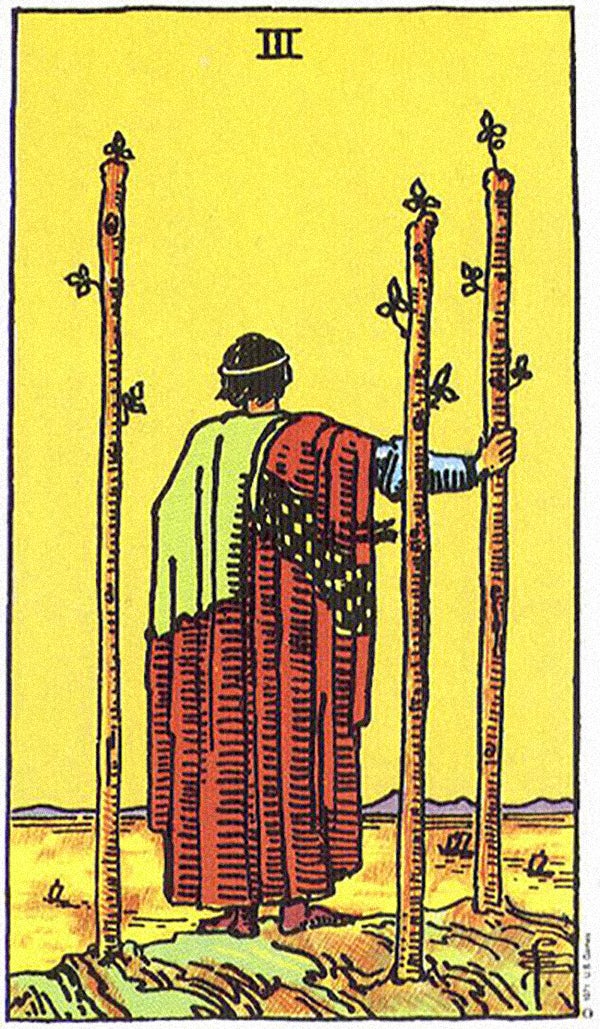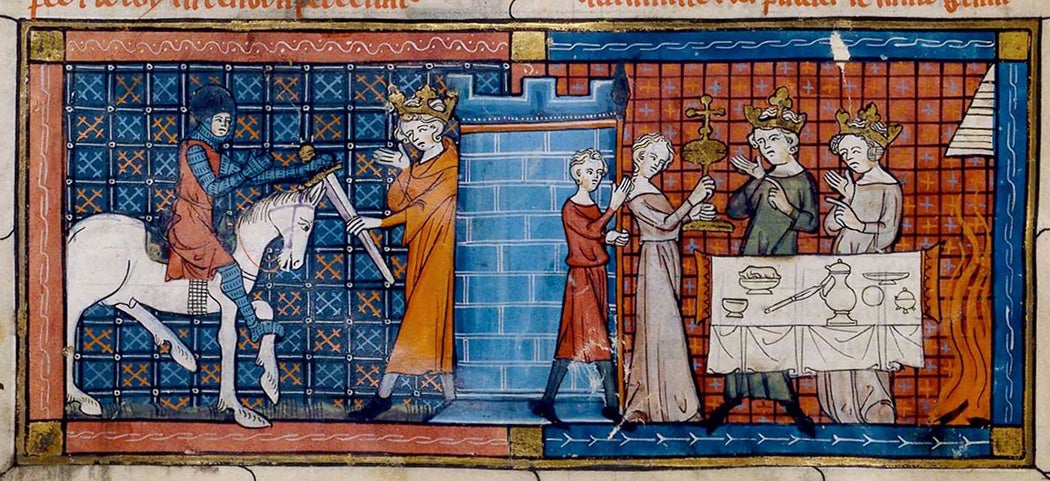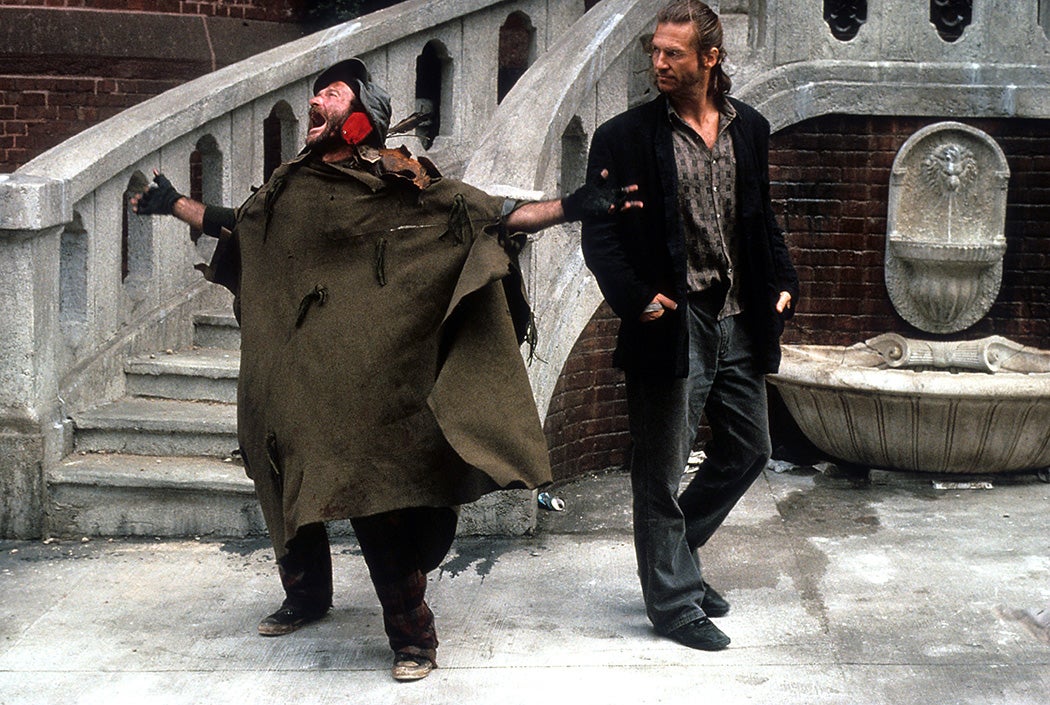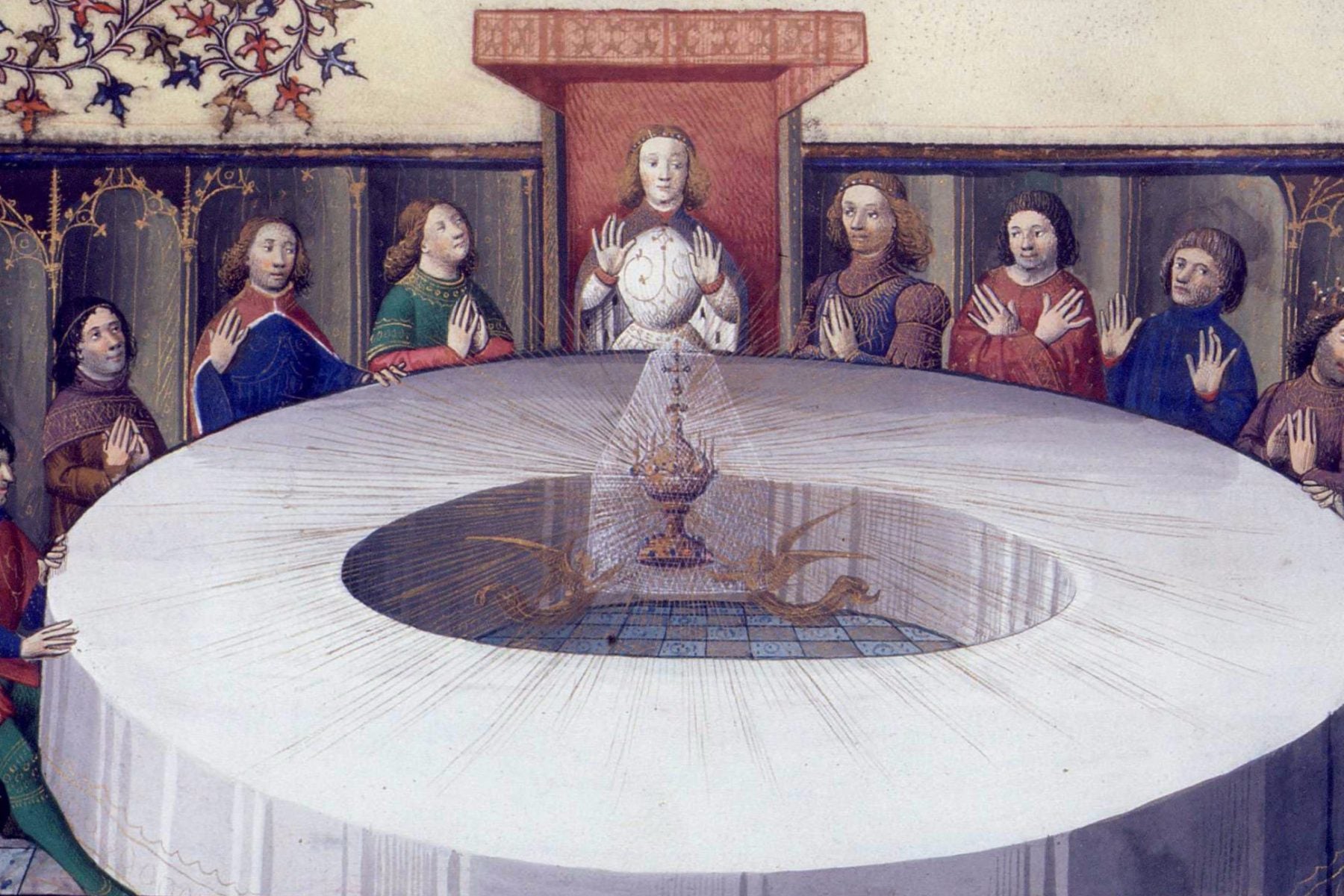When the inaugural issue of the prestigious literary magazine Criterion hit shelves in October 1922, it included a 434-line-long poem by a little-known American author who spent his days as a banker at Lloyd’s. T. S. Eliot’s The Waste Land, with its cacophony and bleakness, encapsulated in verse the spirit of modernism, much like Stravinsky had in music with Rite of Spring in 1913.
The Waste Land includes drowned sailors, soothsayers and tarot-card readers, and quarreling lovers. There are mythological figures, such as Tiresias, Tristan, and Isolde, and lines from poems, operas, and works of literature that span genres and cultures. Undergirding the action is one of the most well-known, yet enigmatic myths in Western tradition, namely the legend of the Fisher King, which contains elements of your standard heroic quest, the restoration of the land, and cyclical fertility rites.
A character from the Arthurian literary cycle dating as far back as the 12th century, the Fisher King is the guardian of the Grail, originally conceived of as a platter; later versions of the story explain it as a chalice from which Christ drank at the Last Supper, ergo its holiness. In all tellings, the Grail is a coveted object with miraculous power and is pursued by knights on a quest. Meanwhile, the Fisher King, whose portrayal as an angler accounts for his title, is blighted by a wound that will not heal and, because of this injury, the land he rules wilts into a wasteland. Both he and the land will only become well when a knight asks the right question.

It is a story that, to this day, survives in adapted form in video games, TV shows, and fiction; some see echoes of the Fisher King in the paralyzed character Bran Stark in Game of Thrones. It’s easy to see the reason behind the legend’s popularity: it’s archetypal, hence adaptable, and, much like the protagonists of Greek tragedies such as Oedipus, Orestes, and even Medea, he transcends the binary between hero and villain. In making the story of the Fisher King central to The Waste Land, Eliot drew from rich literary and religious scholarship that goes beyond Arthurian legends. Moreover, as we will see in the text, he humanized him by turning him into someone existing outside the Arthurian milieu, a stand-in for mankind waiting for the healing of the land, and the self. “Eliot’s Fisher King may appear not only as any hero of myth or romance but also as any hero or anti-hero of literature, history, or real life,” writes Patricia Sloane in Arthuriana.
Eliot’s Interpretation: Indo-European Precedents
In Eliot’s own footnotes, the poet asserts that The Waste Land was influenced by two seminal works of anthropology. One is Jessie Weston’s From Ritual to Romance (1919) which explores how Medieval romances, especially the Grail cycle, can be traced back to fertility rites. The other is The Golden Bough by James George Frazer (1890), which tracks the connections between organized religions and early fertility rituals. “Anyone who is acquainted with these works will immediately recognize in the poem certain references to vegetation ceremonies,” Eliot teased. In this context, vegetation ceremonies refer to seasonal fertility rites.
These two sources are on a continuum. “From Ritual to Romance is largely an extension of Frazer’s reasoning, arguing that romance [as in, the medieval narrative adventure, courtly love and chivalry] is built around remnants of pagan myth,” Sloane writes. “Tristan, Parsifal, Lancelot, Galahad, and Anfortas or Amfortas (the Fisher King) might be regarded, then, as late variations on Attis, Adonis, Osiris, Tammuz, and other year-gods [Gods that symbolize the cycle of seasons, marking the passage of time] Frazer discusses.”
Weekly Newsletter
Frazer (and, by extension) Weston were pivotal figures in placing religion and myth in an Indo-European context, about which there was widespread interest in the early 20th century. Again, think of Stravinsky’s Rite of Spring: set in Pagan Russia, it’s about a fertility rite signaling the onset of spring. On that note, the Fisher King and related motifs have parallels across Indo-European traditions. Aphrodite’s lover Adonis meets a fate similar to the Fisher King, for example, when a jealous Ares sends a wild boar to wound Adonis in the thigh; in some versions of this tale, Ares transforms into boar himself. Indeed, Adonis is injured and dies in the arms of his beloved, and as he does, so does the land. His death is not final, however, as Aphrodite appeals to Zeus to resurrect him and both Adonis and the land return to life. Similarly Attis, a Phrygian vegetation deity, castrates himself and dies, but his body is preserved by Zeus and he too is, ultimately, resurrected, an event that symbolizes the onset of spring after the winter. In the sacred Hindu text the Rigveda, Indra frees the rivers that had been seized by the giant Vritra, thus restoring the land. And in Norse myth, it is the god Odin who shares similarities with the Fisher King: the poem Hávamál, which appears in a 13th-century manuscript, relates how, in order to acquire the knowledge of the runes, Odin hung on the World Tree for nine days and nights, pierced by a spear, not eating or drinking, until he saw the runes and took them.
As an aside, some might be more familiar with the trope of fertility and land restoration being associated with goddesses. “Suffice it to recall the Babylonian story of Ishtar, who passes part of the year in the lower world, which leads to general sterility,” writes Alexander Krappe in Modern Language Review. “Much the same situation exists in Greece during the period of Demeter’s mourning, threatening with famine mankind and even the beasts in the field.”

Although the Fisher King is never mentioned by name in The Waste Land, he appears at least three times. The poem’s first section, “The Burial of the Dead,” goes against the general idea of renewal brought about by the onset of Spring. In it the character Madame Sosostris, a fortune teller, pulls from her tarot deck, “the man with three staves.” In his footnote, Eliot writes that this man is one “[he] associate[s], quite arbitrarily, with the Fisher King himself.”
According to Betsey Creekmore, the tarot Madame Sosostris pulls features the image of a man “in green vegetation interspersed with rocks, and the three staves he holds are living boughs. The color of the water in this card is important because it looks like desert sand.” In Creekmore’s view, Eliot invoked the Waite-Smith deck, named for its creators, the academic and mystic A. E. Waite and the illustrator Pamela Colman Smith. It’s the only deck where the three of wands card is depicted in a scenario that can be traced back to a waste-land-like environment.
The Fisher King appears again in the third section, “The Fire Sermon,” named after the Buddha’s urging that people detach from the senses. In this context, the king is depicted in the act of “fishing in the dull canal/On a winter evening round behind the gashouse/ Musing upon the king my brother’s wreck” (TWL 189-91). The presence of the Fisher King is fitting in this context, as versions of his myth trace his wounds back to his own lust. Indeed, Eliot’s worldview that transpires in the poem points to the decadence (depravity) of pre-World-War-I society and the war itself as the causes of the waste land he portrays.
Near the closing of the poem in “What The Thunder Said,” its fifth and final section, the Fisher King makes a last appearance: “I sat upon the shore/ Fishing, with the arid plain behind me/ Shall I at least set my lands in order?” (TWL 424-26) Though it remains unclear if the healing of the king and the land ever took place, it’s possible to read optimism into it. “With the ‘arid plain behind me,’ with the annunciatory visitations of the thunder god, bringing rain and new life, he seems to have passed through a personal initiation and to have renewed spiritually—if only provisionally,” writes Sherlyn Abdoo in The Centennial Review. “With the thunder and its gift of rain, as in romance generally, fertility triumphs.”
The Fisher King in Literature
The first known mention of the Fisher King occurs in Chrétien de Troyes’ poem Le conte du Graal (ca. 1180), where the knight Perceval is on his way home to see his mother. He comes upon a large body of water and two men in a boat; one of them is fishing. Perceval inquires about shelter, and the fisher directs him to his castle, past a cleft in the hills. Perceval finds the castle and the fisherman there to welcome him, though he apologizes for not being able to stand to greet him. A procession of mysterious objects passes before them with each course of the meal—a lance, a candelabra, and a Grail—a silver platter. On the earlier advice of his uncle, Perceval refrains that night from asking foolish questions and resolves to investigate the next morning. Yet, upon waking he finds the castle is gone.

In the meantime, a maiden asks Perceval, “Did you ask the question Whom does the Grail serve?” Perceval admits he did not, and the maiden reveals that because of this failure the king will not be healed. While Chrétien’s chronicle of Perceval is incomplete, other writers took up his story in what has become known as The Four Continuations, which expand upon Chrétien’s material and eventually bring Perceval’s quest to completion.
It was Robert De Boron in the early 13th century who made explicit the Christian nature of the story of the Grail, morphing the object from a dish into a chalice. In his poem “Joseph d’Arimathie,” a Christ-loving soldier uses a chalice to collect some of Christ’s blood. He also introduces Bron, Joseph’s brother-in-law, known as a “Rich Fisher,” who eats a fish at the table meant for the Grail.
De Boron’s contemporary Wolfram von Eschenbach turns the Grail into a stone and gives the Fisher King a name—Amfortas—in Parzival (c. 1210). Von Eschenbach tells of Amfortas chasing after a woman who was not meant for him and sustaining injury in the process. He cannot be king, but he cannot die, and von Eschenbach explicitly depicts his pain, which can temporarily be relieved by the touch of a spear. In this version, which inspired Wagner’s 1882 opera, Parzival fails his quest at first, and proceeds through the customary series of adventures before finally asking Amfortas, “Uncle, what ails you?” The question’s iteration finally heals the king.
Though interest in Arthuriana soared in the Medieval period, it waned with the Reformation, and it only gained new devotees in the 19th century, when scholars and intellectuals tried to single the Grail out as a quintessentially Celtic myth, an expected Romantic-era reaction to the classical tradition. Sure, there are some Celtic elements in the story. It is, in William Sayers’ words, “a traditional Celtic royal death-tale recounting the fate of an elderly king who is wounded in the leg by a domestic implement in a maritime setting,” he wrote in Arthuriana. “His mobility is impaired, he cannot ride, hunt, or even rise from his couch; his kingdom suffers the same debility, even though his men can hunt and stage a sumptuous dinner—unless this is mere illusion, of a recognizable Celtic story-telling type.” Yet, we previously established that the wounded ruler who needs to be healed is, indeed, a pan-Indo-European trope.
In popular culture
T.S. Eliot and, to a certain degree, Wagner re-popularized the myth of the Fisher King, which has in the past century been adapted into contemporary entertainment and pop culture. Andrea Lagomarsino sees echoes of Eliot in the Great Gatsby by F. Scott Fitzgerald, a self-proclaimed admirer of the poet and The Waste Land. Both works are indebted to From Ritual to Romance, and in Lagomarsino’s schema Nick Carraway is the knight on a quest, Daisy Buchanan is the Grail, and Gatsby himself is a Fisher King-like figure inhabiting a castle-like dwelling, which the characters (and the reader) visit during a sweltering summer.

Carraway, Lagomarsino writes in the F. Scott Fitzgerald Review, “seeks gnosis of mortality and divinity, with Gatsby fulfilling the role of the maimed Fisher King who inadvertently leads Nick to his apotheosis.” And, while Gatsby may have “committed himself to the following of a grail” (emphasis added),” Lagomarsino continues, “He is not in fact following the grail. Instead, it is Nick who seeks the grail, and his quest for initiation echoes the rituals of the mystic life cults in which the grail quest is rooted.”
Terry Gilliam’s 1991 feature The Fisher King, starring Jeff Bridges and Robin Williams, offers a more recent retelling of the myth using capitalistic society as a backdrop, where two damaged men are, eventually, regenerated. “In The Fisher King the crisis of masculinity is conceived as a projection of the crisis of capitalism. The correlation of the health of the male psyche with the health of capitalist patriarchy is established by clearly situating the protagonists as members of the middle and upper class; the poverty and violence they experience thus functions as a projection of the crisis of capitalism,” writes Angela Stukator in Literature/Film Quarterly. “The narrative reaffirms capitalist patriarchy by invoking representations of masculinity which transcend the historically determined socioeconomic structures which the film professes to define and challenge.”
In all, what emerges in most accounts, but mostly in Eliot’s The Waste Land, though, is the Fisher King’s multi-dimensionality: a character bestowed with power, who has strayed and who explicitly needs help in order to be healed. Said healing, however, does not take place through one single heroic act, as in Parsifal’s quest and the Indo-European counterparts. Rather, it’s a series of behaviors, which Eliot himself illustrates in the close of “What The Thunder Said:” “Datta, Dayadhvam, Damyata” Sanskrit for “Give, Show Compassion, Act with [self] control.” Change is, indeed, a process.
Support JSTOR Daily! Join our new membership program on Patreon today.







